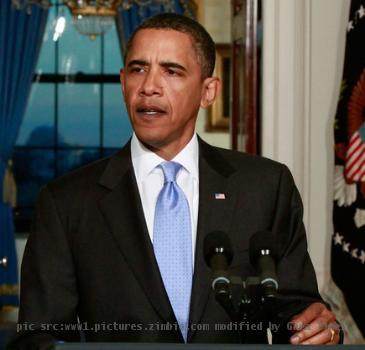Health Care 101: If Obama’s bill passes, the changes start small and keep getting bigger
By Ricardo Alonso-zaldivar, APMonday, March 15, 2010
Health Care 101: A consumer primer on Obama’s bill
WASHINGTON — It took lawmakers a year to shape President Barack Obama’s health care bill. If it finally passes Congress, it’ll take the better part of a decade to write the user manual for consumers and doctors, employers and insurance companies.
Some health insurance consumer protections would go into place immediately, significant but limited in scope. The big expansion in coverage comes in four years. About 25 million people would sign up, with most getting tax credits to help pay premiums. Ripple effects continue well after Obama has to leave office in 2017, if he’s re-elected.
But even if the 2,700-plus-page bill passes, it’s only the end of the beginning. The Obama blueprint will be carried out under less-than-ideal circumstances. Rising medical costs and an aging population will keep squeezing the federal budget. Lawmakers will have to revisit hard choices they sidestepped.
“This is going to play out over a generation,” said Andrew Hyman, who oversees health insurance research for the nonpartisan Robert Wood Johnson Foundation. “It will address how people get coverage, how health care is delivered, and how health care is paid for.”
The House is expected to vote on the final legislation this week, with the Senate to follow later. Here’s a primer on some of the major effects for consumers and other key players:
—IMMEDIATE CHANGES
Uninsured people with medical problems will have a workable alternative. The bill pumps $5 billion into high-risk insurance pools run by the states to provide coverage to those in frail health. Taxpayer-backed insurance won’t be free, but premiums should be much lower than what’s charged by private insurers willing to take those in poor health.
For people with private health insurance — about two-thirds of Americans — there would be some new safeguards. For example, insurers would be barred from placing lifetime dollar limits on coverage and from canceling policies except in cases of fraud. Children could stay on their parents’ coverage until age 26.
—THE SELF-EMPLOYED
Starting in 2014, self-employed people and those whose employers don’t offer coverage would be able to pick a plan through a health insurance exchange, like a supermarket. It’s modeled on the federal employee health program available to members of Congress, with a range of private plans. Small businesses could also join.
About 25 million people would buy coverage through state exchanges, and nearly 6 in 10 would be eligible for help with their premiums. The new tax credits would be computed according to income and other household characteristics. The money would go straight to the insurer. To consumers it would look like a discount — generous for lower-income families, less so for those solidly in the middle class.
For example, a family of four making $44,000 would pay $2,763 in premiums —about 6 percent of its income— for a policy worth $9,435.
But a similar family making $66,000 would have to pay $6,257 in premiums, close to 10 percent of its income. That may be less than a mortgage, but it’s more than a car payment.
Once the exchanges open, most Americans would be required to carry health insurance or pay a fine. Medicaid would be expanded to cover childless adults living near poverty, bringing the total who’d gain coverage to more than 30 million.
People with employer-provided insurance would not see major changes. But if they lost their job, they’d be able to get coverage through the exchange.
—SENIORS
Seniors have been understandably worried about the health care plan, much of it financed with Medicare cuts the government’s own experts say could be unsustainable.
In the crosshairs are subsidies to private Medicare Advantage insurance plans, which now enroll about one-quarter of seniors. The government overpays the plans when compared to the cost of care under traditional Medicare. That largesse translates to lower costs for seniors in the plans, and the overhaul could trigger an exodus from Medicare Advantage as insurers are forced to raise rates to stay in business.
But seniors stand to gain as well. Obama would gradually close the coverage gap in the middle of the Medicare prescription drug benefit. The so-called doughnut hole would start to shrink immediately, but it wouldn’t be fully closed until 2020. In the meantime, seniors in the gap would get a 50 percent discount on brand name drugs.
The plan also improves preventive benefits for seniors in traditional Medicare.
—DOCTORS
Primary care doctors and general surgeons practicing in underserved areas such as inner cities and rural communities would get a 10 percent bonus from Medicare. But the more significant changes for doctors would unfold slowly. The goal is to start rewarding doctors for keeping patients healthy, not just treating them when they get sick.
The plan would use Medicare as a testing ground for new ways of coordinating care for patients with multiple chronic illnesses such as high blood pressure, diabetes and heart problems, a common combination. Primary care doctors would become care managers for such patients, keeping close tabs on medications and basic health indicators.
Doctors and hospitals would be encouraged to band together in “accountable care organizations” modeled on the Mayo Clinic.
—EMPLOYERS
Obama’s plan wouldn’t require employers to provide insurance to their workers, but it would hit them with a stiff fine if even one of their workers gets a federally subsidized coverage. Companies with 50 or fewer workers would be exempt, and those with 25 workers or fewer could get federal assistance.
But the fines could turn into a big headache for many employers, particularly since they may not be able to tell if their workers are getting benefits from the government. For example, a company with 100 employees that fails to provide coverage could face a fine of $140,000 under the plan Obama unveiled Feb. 22. Getting the bill from the IRS would become a dreaded moment for business owners.
—INSURANCE COMPANIES
Health insurance companies would face unprecedented federal regulation and particularly close scrutiny of their bottom line. A fixed percentage of income from premiums would have to go to medical care, otherwise insurers would be forced to provide rebates to consumers. That share is 85 percent for large group plans, and 80 percent for plans in the small group and individual markets.
One of the central reforms of the bill won’t start until 2014, when the exchanges open. From then on, insurers will not be able to turn away people with medical problems or charge them more.
(This version CORRECTS Corrects enrollment in exchanges. ADDS photo links. Moving on general news and financial services.)
Tags: Access To Health Care, Barack Obama, Government Programs, Government Regulations, Government-funded Health Insurance, Health Care Industry, Health Care Reform, Health Issues, Industry Regulation, Irs, North America, Personal Finance, Personal Insurance, Personal Spending, Political Issues, Seniors, Seniors' Health, United States, Washington
|
March 16, 2010: 9:09 pm
As a practicing physician, I assure that the reform proposed is not the answer. I agree that reform is needed but not this. Until tort reform is addressed and greatly strengthened, costs will continue to spiral out of control. In the ED I cannot use my judgment because the threat of litigation forces me to diagnose a “tension headache”only after a CT scan, a multitude of blood tests, etc. are done at the cost of thousands of dollars. Further, the expections of the consumers will need to be modified the reflect the premise that we cannot live forever and healthcare is not free. |





John Larry Black